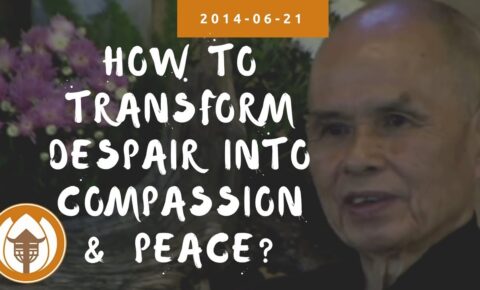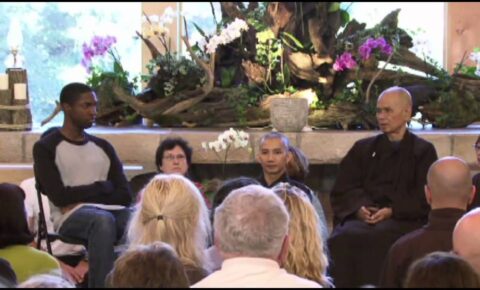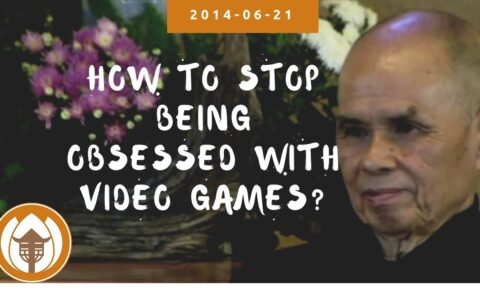From the Rising Tide Meditation Hall at a retreat at Magnolia Grove Monastery in Batesville, Mississippi during the 2013 Nourishing Great Togetherness teaching tour. This is the third dharma talk for the 6-day retreat with the theme Healing Ourselves, Healing the World. The date is September 27, 2013. We begin with seven minutes of chanting from the monastic brothers and sisters.
Try the BetterListen Version of this entire retreat – click the image below
Thay introduces and explains the process for the Novices and Aspirants along with the 5-year program of training as a monastic. It can bring you a lot of joy. They practice the Ten Precepts of a novice. The third source of nutriment is volition – deepest desire of your life. What you want to do with your life? Knowing what you want to do can give you energy. Brotherhood and sisterhood creates a very deep love. What is life as a monastic like, how are decisions made, how do you practice? Why did Thay begin to take students after living in exile in the west? The need for dharma teachers across the world is great. Thay invites you to join the five year program.
At approximately 38-minutes into the recording, we turn to a new topic. We have talked about the art of suffering – if we know how to suffer, we will suffer much less. The art of suffering is linked to the art of happiness. Skillfully we can create joy for ourselves and others. There are many ways to create joy and happiness. The first method is to let go, to leave behind. Letting go will give birth to joy and happiness. If you let go, happiness can come right away. What are holding onto that we think is crucial for our happiness? The practice of releasing our cows. We can practice using sitting meditation and learn to release our cows. A whole country can even be caught my a cow – our ideology. The teaching of the monk Badhya who exclaimed “Oh my happiness!” during his meditation. He was able to let go.
The second way to joy and happiness is mindfulness. Mindfulness is a source of joy and a source of happiness. This is our practice. Then we have concentration – if you are very mindful, then concentration can be born. From concentration we then have insight – it can liberate us. Joy and happiness can arrive.
in the teachings of the Buddha, there are five types of energies that you can generate. They can help generate joy and happiness. The first three were covered earlier – mindfulness, concentration, and insight. The other two are faith and diligence. Faith here means confidence. The other teaching on power is cutting through / letting go. The power to cut by brought requires courage and courage requires us to have insight. The second power is wisdom. The third power is the power to love, to forgive.
How do we listen to a dharma talk? What is the zen way? We continue with a brief review from the exercises of mindful breathing.
At 86-minutes into the recording, we turn to a teaching on the three doors of liberation – emptiness, signlessness, and aimlesslessness. We hear an explanation and teaching on each of these doors.
No video is available for this talk.

How to stop looking for other people’s approval?
Thay answers questions on 21 June 2014. Question 5 Help us caption & translate this video! http://amara.org/v/FzGe/ Topics: buddhism, mindfulness, thich nhat hanh, teenager, teens, inferiority, affirmation, approval, criticism, self-confidence, independent, belief, vietnam war







